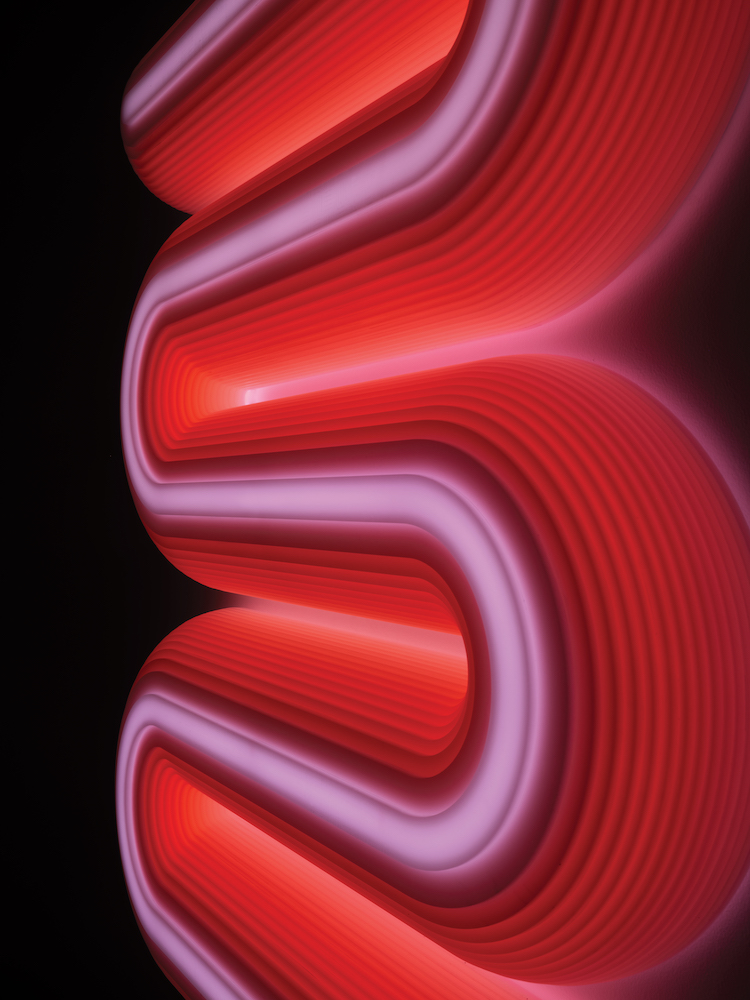Phillip K Smith III makes works that glow. His individual pieces and his installations share a kinship with California Light and Space artists like James Turrell, Robert Irwin and Larry Bell, as they are primarily about light and the nuances of shifting colors of light over time. Differing from that earlier group of artists, Smith is interested in “light + change.” His works are durational and in order to be experienced in full, viewers need to stand in front of them taking in subtle transitions in colors. Some of Smith’s sculptures are high tech—created with LEDs, electronics and other man made or synthetic materials, while others are built from wood.
Presented in the natural landscape, many of Smith’s pieces are site specific and immersive, yet they are still quite engaging and successful when seen inside museums and galleries. Light + Change includes works dated from 2004 to 2022 and these floor and wall based sculptures fill a specially designed darkened space in the museum. The earliest pieces (located in the center of the installation) are Smith’s Cylinders (2004), floor based sculptures that are lit from below and comprised of interlocking Douglas fir stakes fashioned together to create towering, complex, geometric forms that emit an internal glow as they rise from the ground.
As viewers move from space to space, the different types of glows become more apparent. Twelve 90’s (2022) opens the exhibition. It consists of twelve glass and aluminum “boxes” positioned on the wall at 90 degree angles, each side emitting a different color of light. The sculpture appears to change as viewers pass because it is programmed to cycle through different colors and displays infinite combinations. Numerous, ever changing colors also occur in Two Corners (2022) where large mirrored light boxes filled with LEDs are installed on adjacent walls that meet in a corner. Viewers see themselves in the mirrored surfaces, along with numerous receding rectangles that slowly morph from hue to hue. In his site specific installations, Smith choreographs experiences that explore not only principles of color theory, but also how the human eye perceives colors that radiate, mix and contrast with each other.

Phillip K. Smith III, Flat Portal 4.2, 2022. Courtesy of the Palm Springs Art Museum. Photo by Lance Gerber.
Smith’s seductive and captivating work is simultaneously architectural and perceptual, sculptural and environmental. He is a master craftsman who is as skilled in shaping large acrylic formations into curved shapes, as he is at programming electronics. Sky Torus 2.1, 3.1 and 4.1 (2022) are large illuminated disks of concentric rings of different widths and changing hues, installed on three separate walls. While each Sky Torus is an individual sculpture, they work in concert with each other to create an environment.
Both alone, but more so when seen together, Smith’s awe inspiring pieces have a meditative and even spiritual aura. While the “wow” factor is huge in Smith’s installations, the works retain their initial appeal and illustrate Smith’s sensitivity to the changing light in the desert landscape where he makes his home. He is a thoughtful observer interested in echoing natural phenomena and translating that experience into powerful and memorable works of art.


